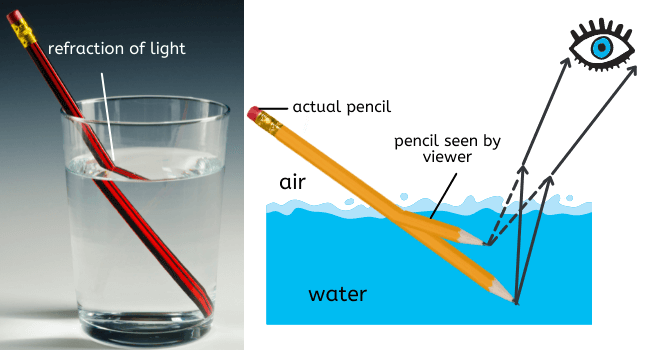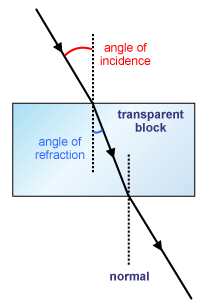Goal
Understand what refraction is and gain an intuition on what it will do to a sound wave.
Bending Waves
Refraction is the bending of a wavefront due to the change in density of the medium it is traveling through. The video below is a great demonstration of the topic and although it covers light it doesn’t matter. In fact, the first course I learned about refraction was actually a physics optics class!
These is the same thing that is happening when you place a straw in water and it appears like the straw is not connected to itself!

To imagine refraction, picture a wavefront traveling from a source. This wavefront is made of tons of little sound rays all proceeding perpendicular to the wavefront. Assuming they are traveling through the air with ease let’s say the wave front encounters a wall. Ignoring all other effects and focusing only on refraction (so no reflection), let assume the wave hits the wall perpendicularly or dead on. This denser wall has the effect of speeding up the wave since sound travels faster through denser mediums. The entire wavefront, each one of the little sound rays, is affected all at once because they all enter the wall at the same time.
Now consider the case where they instead enter at an angle. In this case a portion of the wave will increase in speed because it entered at an angle and begin to travel faster. More of the wave will enter and the effect will be more of the wave speeding up until the entire wave has entered the new medium and is now traveling at the new speed. This gradual change in the speed of the wave causes a bending to occur and this is refraction. The amount of bending that occurs depends on the material that the sound is entering.
If a sound enters a medium that is denser it will refract towards the normal of that surface, and if a sound is entering a surface that is less dense it will refract away from the normal. So, if a sound enters a dense surface and refracts towards the normal this is undone when it leaves the surface assuming it’s entering the same medium it was in before.

Things such as temperature gradients can have a significant effect on the refraction of sound. For example, if the air is colder in the sky than on the ground, and our sound source is a little above the ground then the sound will refract upwards and not get very far! However, if the situation is reversed and they sky is warmer than the ground then it will refract downwards and have a better chance of being heard from further away. If you have ever been out on a cold night and noticed how much further your voice can travels this is why. Temperature gradients both indoors and outdoors should be considered for this reason! Having the heater on the floor vs on the ceiling can have an impact on your acoustics and if you’re recording outdoors you may need to take note of the temperature to make some mindful mic placements.


I want to briefly note here that talking upwind vs downwind is not refraction. While it is a similar effect, in fact so much so you may as well think of it as refraction, it is not.


To support this series please consider donating via
paypalor joining the
patreon.